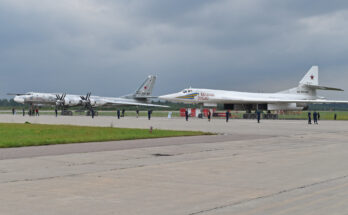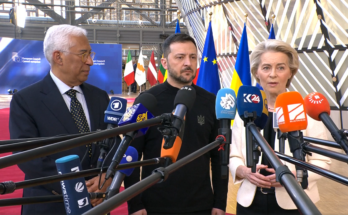by Dan Darling, International Military Markets Analyst, Forecast International.
Reports in Serbian media coming in the wake of Russian Deputy Prime Minister Dmitry Rogozin’s visit to Belgrade on January 11-12 to discuss intergovernmental trade and economic and technological cooperation between the two countries indicate that Serbia’s government continues to press Moscow for a potential sale of MiG-35 fighters. According to statements by Rogozin, the sale of these combat aircraft would be included in a larger package of military systems, primarily concentrated towards Serbia’s land and air forces.
Serbia has made it clear that it intends to upgrade its defensive capabilities, contingent on the country’s economic and financial situation. The impetus behind this push is less the years of erosion of the Serbian armed forces’ capabilities than steps taken by neighboring Croatia to shore up its own military.
Serbia fought a series of bloody wars with Croatia from 1992 to 1995 when the latter split from the Federal Republic of Yugoslavia.
Last year, the Croatian government publicly announced its intention to acquire new combat aircraft as a replacement for its Air Force’s 12 Soviet-designed MiG-21s. But the item that has sparked the most concern for the Serbian government is Croatia’s request for a U.S. donation of 16 mobile M270 multiple launch rocket systems (MLRSs) from surplus military stocks that would be armed with Lockheed Martin’s MGM-140 Army Tactical Missile System (ATACMS).
Confronted with budgetary pressures and diminished buying power due to a slide in the value of its local currency, Belgrade has sought help from its traditional ally, Russia. During his visit to Moscow in October 2015, Prime Minister Aleksandar Vucic made an entreaty to the Kremlin for a bundled arms sale that would help maintain a minimum standard of capability for Serbia’s beleaguered military and – most importantly for Serbia as a non-NATO member – provide a degree of protection for its airspace.
The package of weaponry sought by Serbia includes S-300PMU surface-to-air-missile air defense systems, up to 16 Pantsir ground-based air defense systems, and a batch of combat helicopters. Interestingly, a long-standing request by Serbia for six to eight MiG-29M2 jet fighters has evolved towards a desire for a similar total of thrust-vectoring MiG-35 fighters.
For its part, Russia would need to extend a credit line to Belgrade – its normal method for inking arms sale agreements with developing nations – in order to allow Serbia to afford all the equipment the country is requesting. While Serbia’s economic recovery has accelerated faster from its 2014 recession than previously expected, the country is still expected to grow by less than 2 percent in 2016.
Further, the government is in the midst of implementing a three-year reform program agreed to with the International Monetary Fund in February 2015, which came on the heels of an earlier deficit-cutting package pushed through by the government in October 2014 that involves a standby loan of $1.25 billion for Serbia.
Serbia’s existing defense budget structure has long been insufficient for conducting a vast military modernization program, and with the government’s deficit-cutting measures and economic reforms, the fiscal environment is even less conducive to doing so within a restricted timeframe.
So, should Moscow opt to extend a credit line to Belgrade and offer to sell Serbia the hardware requested at cost, it would still be rash to expect any announcements by Serbia of splashy new weapons purchases in the near term.
For 50 years, Forecast International intelligence reports have been the aerospace and defense industry standard for accurate research, analysis, and projections. Our experienced analysts compile, evaluate, and present accurate data for decision makers. FI's market research reports offer concise analysis of individual programs and identify market opportunities. Each report includes a program overview, detailed statistics, recent developments and a competitive analysis, culminating in production forecasts spanning 10 or 15 years. Let our market intelligence reports be a key part of reducing uncertainties and mastering your specific market and its growth potential. Find out more at www.forecastinternational.com




